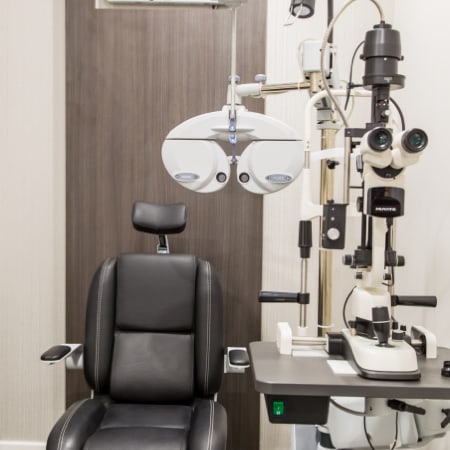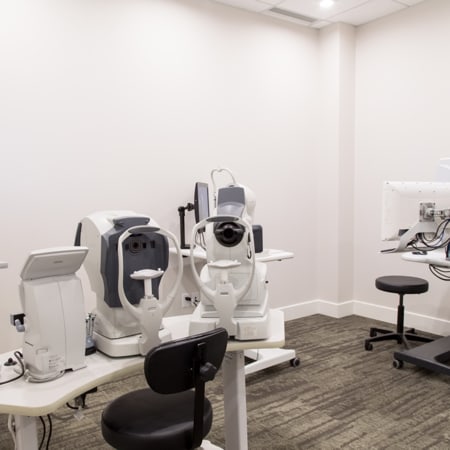Diabetes & Your Vision
If you have type 1 or type 2 diabetes it is especially important to attend your regular comprehensive eye exams, as those with diabetes may have an increased risk for certain eye diseases such as diabetic retinopathy. These conditions can cause vision problems, and even vision loss in serious cases, if not diagnosed and treated.
Diabetic eye exams can detect diabetes complications, even before you’ve noticed a difference in your vision, and are an essential part of diabetes management.
If you have diabetes and are due for an eye exam, visit us today and let’s discuss your vision.

Diabetic Eye Exam Frequency
Diabetes can affect your eyes in many ways, causing symptoms such as blurred vision, light flashes, sudden vision loss, or vision spots. Due to this, it is important to attend a diabetic eye exam regularly—the recommended eye exam frequency if you have diabetes is once a year.
If you’re experiencing the above symptoms, book an exam right away and talk to your doctor.


Understanding Diabetic Eye Care
Diabetes may increase the risk of several serious conditions that can impact your vision if left untreated, including:
Diabetic retinopathy is a primary concern for vision loss associated with diabetes. Many diabetic eye diseases can be challenging to detect without a comprehensive eye exam, as they’re often asymptomatic in the early stages.
Diabetic Retinopathy
One eye-related complication of diabetes is diabetic retinopathy. Diabetic retinopathy refers to damage to the blood vessels in the retina of the eye. This can cause swelling, bleeding, and abnormal changes in the retina which can lead to vision problems and vision loss if not treated.
Once diabetic retinopathy is diagnosed through a comprehensive eye exam, there are many treatment options including injections and laser surgery to help reduce symptoms.
Our Diagnostic Technology
During our comprehensive exams, including diabetic eye exams, we use a variety of modern technology and devices to thoroughly examine your eyes.
This technology helps us to test your ocular health and vision quality and diagnose conditions or diseases that may be underlying.
At Bluewater Optometry, we focus on providing a high level of medical care to our patients. Imaging technology is not covered by OHIP but is necessary for diagnosing and managing diabetes. Our technology is a crucial part of managing the effects diabetes has on your eyes.
Optical coherence tomography (OCT) is an imaging device that takes in-depth and layered images of the retina using light rays. It is similar to an undersound, but instead of sound waves, it is replaced with light.
OCT captures images of layers in the retina which assists in understanding retinal thickness, which can point to certain conditions and diseases.
Colour fundus retinal photography is a photography system that takes colour images of the inside surface of the eye using a microscope attached to the camera.
The interior surface of the eye captured through this fundus photography includes the retina, vascular system, optic disc, macula, and fundus to get a full view of the health of the eye.
Fundus photography assists in diagnosing conditions such as age-related macular degeneration (AMD) and macular edema.

Welcoming Our Patients with Diabetes
Our practice is here to care for the vision health of our patients with diabetes with regular diabetic eye exams and treatments. Visit us today for an eye exam.














